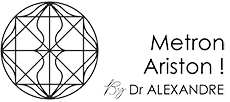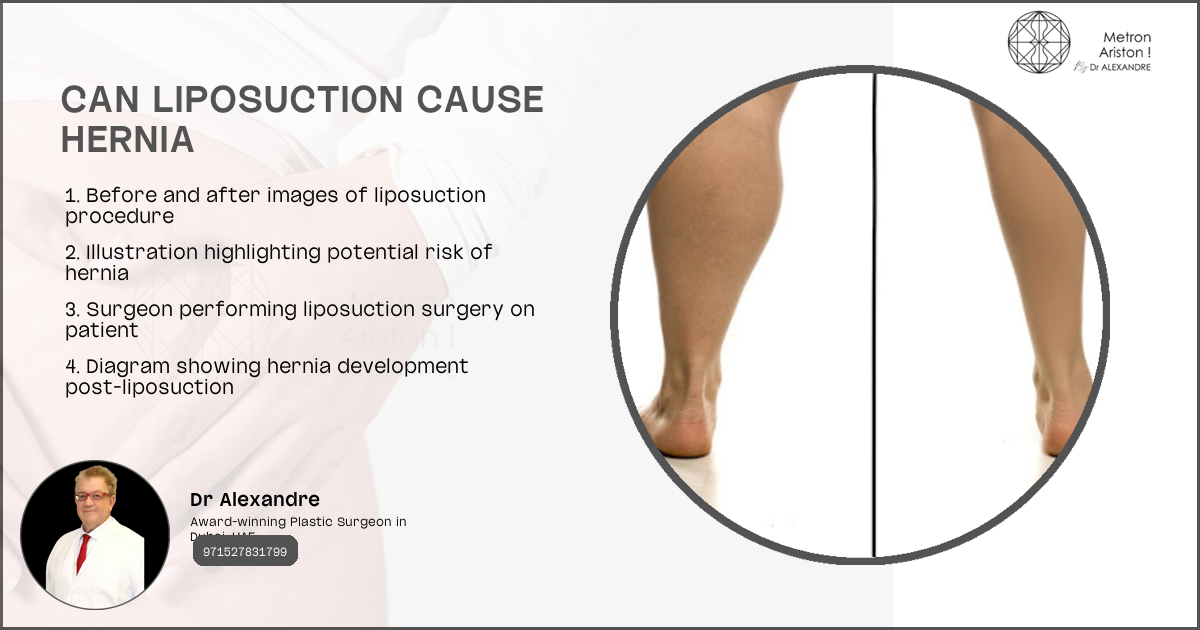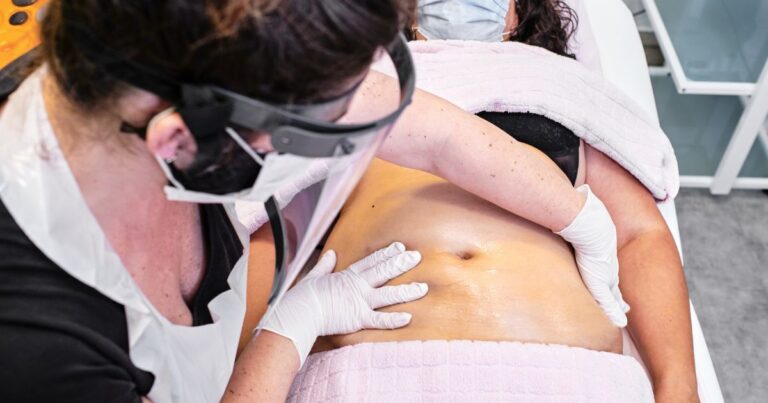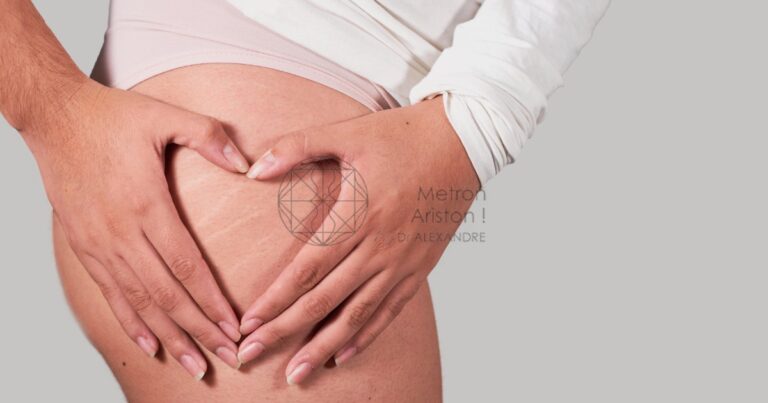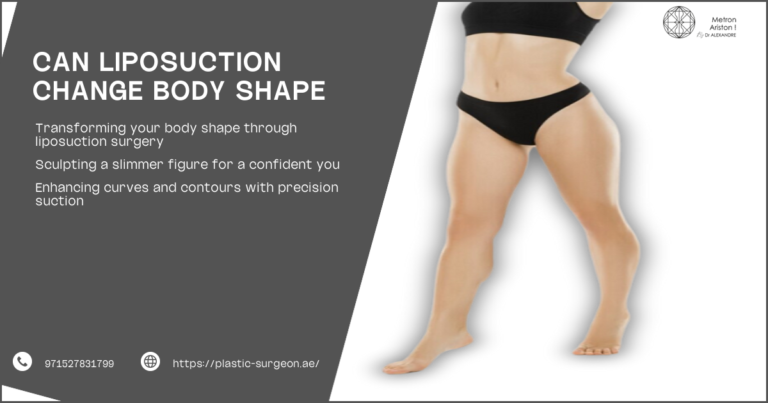Can Liposuction Cause a Hernia
Liposuction is a popular cosmetic procedure aimed at removing excess fat from specific areas of the body. While it is generally considered safe, some patients have concerns about potential complications, such as hernias. This article explores the connection between liposuction and hernias, the types of hernias that may occur, and how to minimize risks.
Understanding the Connection Between Liposuction and Hernias
Liposuction involves making small incisions through which fat is suctioned out. Although minor, these incisions can potentially weaken the abdominal wall, leading to hernias. A hernia occurs when an internal part of the body pushes through a weakness in the muscle or surrounding tissue wall.
- Incisions and Abdominal Wall Weakness: Small incisions can sometimes weaken the abdominal wall.
- Pressure Changes: The removal of fat can alter internal pressure dynamics, potentially leading to hernias.
Factors That May Increase the Risk of Hernia After Liposuction
Certain factors can elevate the risk of developing a hernia post-liposuction. These include pre-existing conditions, surgical technique, and patient lifestyle.
- Pre-existing Conditions: Conditions like obesity or previous abdominal surgeries can increase hernia risk.
- Surgical Technique: The skill and experience of the surgeon play a crucial role.
- Patient Lifestyle: Activities that strain the abdominal muscles post-surgery can contribute to hernia formation.
Types of Hernias Associated with Liposuction
Incisional Hernias
Incisional hernias occur at the site of a previous surgical incision. They are more likely if the incision does not heal properly.
- Location: Typically at the site of the liposuction incision.
- Symptoms: Bulging, pain, and discomfort at the incision site.
Umbilical Hernias
Umbilical hernias occur near the belly button and can be exacerbated by liposuction procedures in the abdominal area.
- Location: Around the navel.
- Symptoms: Swelling or bulge near the belly button, pain, and discomfort.
Abdominal Wall Hernias
These hernias occur when there is a weakness in the abdominal wall, allowing internal organs to protrude.
- Location: Anywhere along the abdominal wall.
- Symptoms: Visible bulge, pain, and changes in abdominal contour.
Liposuction Techniques and Hernia Risk
Traditional Liposuction
Traditional liposuction involves using a cannula to break up and suction out fat manually. Due to the physical manipulation involved, this method can sometimes increase the risk of hernias.
- Technique: Manual fat removal using a cannula.
- Risk: Higher due to physical manipulation.
Tumescent Liposuction
Tumescent liposuction involves injecting a large volume of fluid into the fatty tissue before removal. This technique can reduce bleeding and bruising but still carries some risk of hernia.
- Technique: Injection of fluid before fat removal.
- Risk: Moderate due to fluid injection and tissue manipulation.
Ultrasound-Assisted Liposuction
This technique uses ultrasound waves to liquefy fat before removal, potentially reducing the risk of hernias by minimizing physical trauma.
- Technique: Ultrasound waves to liquefy fat.
- Risk: Lower due to reduced physical trauma.
Preventing Hernias During Liposuction Procedures
Surgical Technique Considerations
The surgeon’s technique can significantly impact the risk of hernias. Using smaller incisions and avoiding excessive tissue manipulation can help.
- Incision Size: Smaller incisions reduce risk.
- Tissue Handling: Gentle manipulation minimizes trauma.
Post-Operative Care and Recovery
Proper post-operative care is essential in preventing hernias. Patients should follow their surgeon’s advice on activity restrictions and wound care.
- Activity Restrictions: Avoid heavy lifting and strenuous activities.
- Wound Care: Proper care to ensure incisions heal correctly.
Recognizing Hernia Symptoms After Liposuction
Visible Bulges or Protrusions
One of the most common signs of a hernia is a visible bulge or protrusion in the affected area.
- Observation: Look for unusual bulges.
- Action: Consult a doctor if noticed.
Pain or Discomfort in the Affected Area
Pain or discomfort, especially when lifting or bending, can indicate a hernia.
- Symptoms: Pain during physical activity.
- Consultation: Seek medical advice if pain persists.
Changes in Abdominal Contour
Changes in the shape or contour of the abdomen can also be a sign of a hernia.
- Observation: Monitor for contour changes.
- Action: Report any changes to your surgeon.
How Long Does It Take to Recover from Liposuction?
Immediate Post-Operative Period
Recovery from liposuction begins immediately after the procedure, with most patients experiencing swelling and bruising.
Returning to Normal Activities
Most patients can return to normal activities within a few weeks, but strenuous activities should be avoided for at least a month.
Long-Term Results and Maintenance
Long-term results of liposuction can be maintained with a healthy lifestyle, including diet and exercise.
Treatment Options for Hernias Caused by Liposuction
Surgical Repair Techniques
Surgical repair is often necessary for hernias, involving techniques like mesh repair or laparoscopic surgery.
- Mesh Repair: Using a mesh to strengthen the abdominal wall.
- Laparoscopic Surgery: Minimally invasive repair.
Non-Surgical Management
In some cases, non-surgical management, such as wearing a supportive garment, may be recommended.
- Supportive Garments: Wearing a hernia belt.
- Lifestyle Changes: Avoiding activities that strain the abdomen.
Preventive Measures
Preventive measures include maintaining a healthy weight and avoiding activities that strain the abdominal muscles.
- Healthy Weight: Reduces pressure on the abdominal wall.
- Activity Modification: Avoiding heavy lifting.
The Importance of Choosing a Qualified Surgeon
Dr. Alexandre’s Expertise in Liposuction
Choosing a qualified surgeon like Dr. Alexandre can significantly reduce the risk of complications, including hernias.
Patient Safety Protocols
Qualified surgeons follow strict patient safety protocols to minimize risks.
Comprehensive Pre-Operative Assessments
Thorough pre-operative assessments help identify potential risk factors and ensure patient safety.
Liposuction Alternatives with Lower Hernia Risk
Non-Invasive Fat Reduction Methods
Non-invasive methods, such as CoolSculpting, offer fat reduction without the risks associated with surgery.
- CoolSculpting: Freezes and eliminates fat cells.
- Laser Lipolysis: Uses laser energy to break down fat.
Minimally Invasive Procedures
Minimally invasive procedures, like laser liposuction, offer a lower risk of hernias compared to traditional liposuction.
- Laser Liposuction: Uses laser energy to liquefy fat.
- Radiofrequency Lipolysis: Uses radiofrequency energy to reduce fat.
Lifestyle Changes for Body Contouring
Adopting a healthy lifestyle, including diet and exercise, can help achieve body contouring goals without surgery. Liposuction hormonal impact Liposuction can affect hormone levels in the body by removing fat cells that produce certain hormones This change may influence how the body regulates hormones after the procedure Liposuction results inconsistent because different people’s bodies react differently to the procedure Some patients may see more fat removal than others even with the same treatment
Pneumatic fat removal uses air pressure to suck out unwanted fat from the body It is a quick way to remove fat without surgery or cutting the skin Liposuction ineffective hipshape means removing fat from hips doesn’t always give the desired shape Some people may still have uneven hips after
Liposuction metabolic improvements can help remove extra fat from the body and may lead to better health Cellulite unaffected liposuction removes fat from under the skin but does not change the appearance of cellulite This procedure targets deep fat layers while leaving the dimpled surface of cellulite unchanged
Alcohol post liposuction Drinking alcohol after liposuction can be dangerous and slow down healing It’s best to avoid alcohol for a few weeks after the surgery to help your body recover faster Liposuction leaves faint marks on the skin where small tubes are inserted to remove fat These tiny scars usually fade over time and become barely noticeable
- Diet: Balanced diet to maintain a healthy weight.
- Exercise: Regular physical activity to tone muscles.
Statistics on Liposuction Complications
Hernia Incidence Rates
According to the American Society of Plastic Surgeons, hernia incidence rates post-liposuction are relatively low but not negligible.
|
Complication |
Incidence Rate |
|
Hernias |
1-2% |
|
Infections |
5-10% |
|
Bleeding |
1-5% |
Overall Complication Rates
The National Institutes of Health reports that overall complication rates for liposuction are around 5-10%.
|
Complication |
Incidence Rate |
|
Minor |
5-10% |
|
Major |
1-2% |
Patient Satisfaction Data
The American Board of Cosmetic Surgery indicates high patient satisfaction rates, with most patients pleased with their results.
|
Satisfaction Level |
Percentage |
|
Very Satisfied |
85% |
|
Satisfied |
10% |
|
Unsatisfied |
5% |
FAQs
What are the risks of liposuction?
Liposuction carries several risks, including infection, bleeding, and scarring. Rare but serious risks include deep vein thrombosis and organ damage. Long-term effects can include changes in skin sensation and contour irregularities.
How long does it take to recover from liposuction?
Recovery from liposuction varies but generally takes a few weeks. Most patients can return to normal activities within a month. A healthy lifestyle can maintain long-term results.
Can liposuction cause internal damage?
Yes, liposuction can potentially cause internal damage. This includes organ injuries, vascular complications, and nerve damage. Choosing a qualified surgeon can help minimize these risks.
By understanding the potential risks and taking preventive measures, patients can make informed decisions about liposuction and its implications. Always consult with a qualified surgeon like Dr. Alexandre to ensure the best outcomes.

